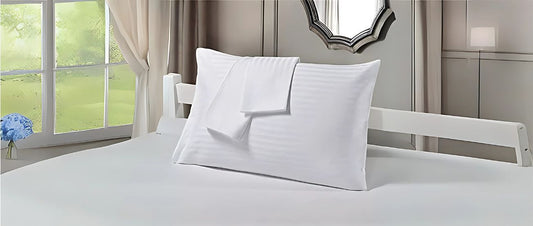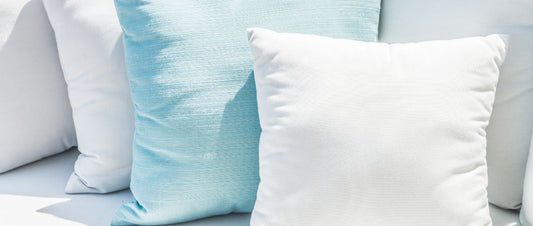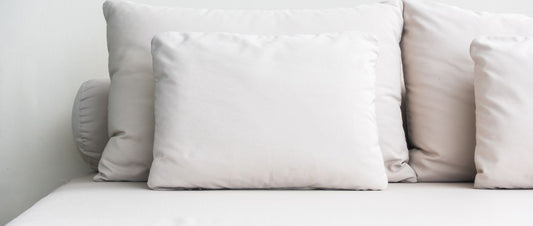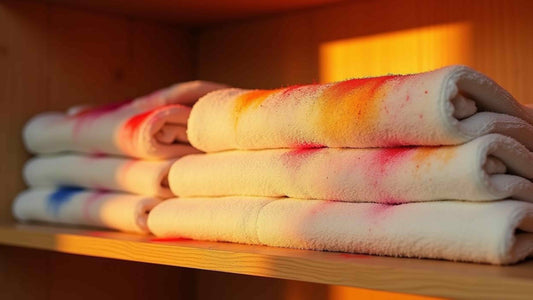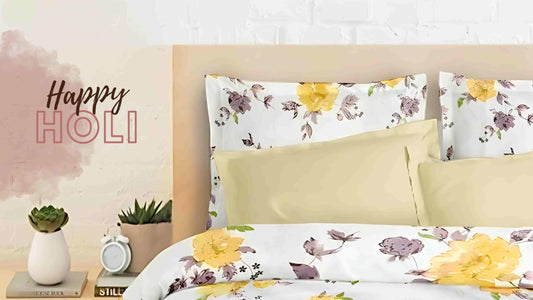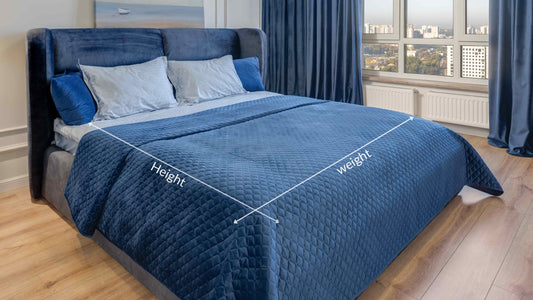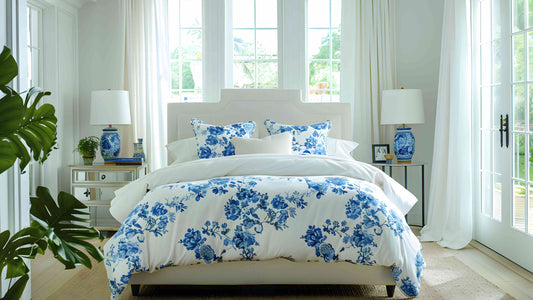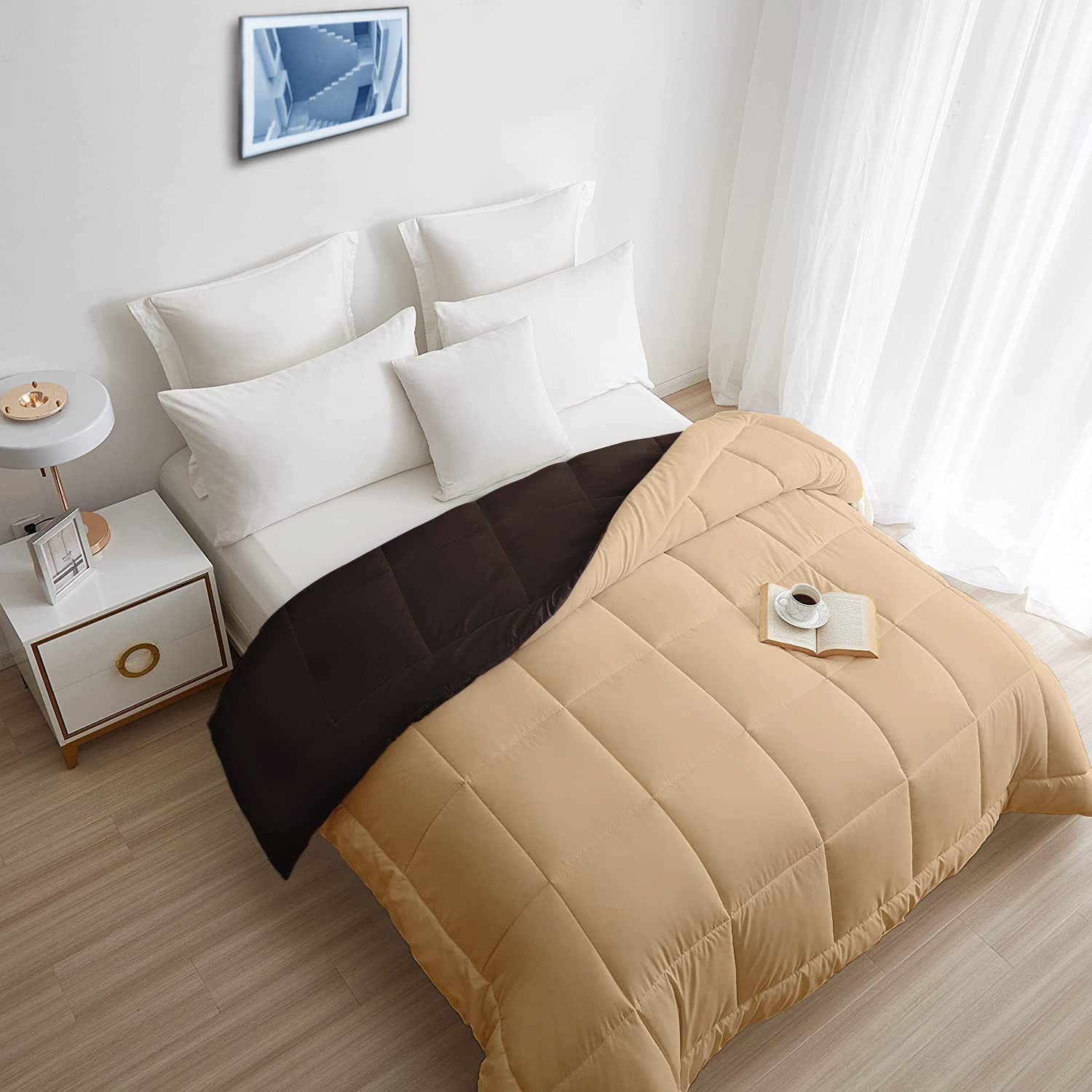Ever find yourself tossing and turning, and just can’t seem to find the perfect mix of comfort and the right temperature? Choosing the right bedding is crucial for creating a cosy and inviting bedroom. Dohars and Comforters are both versatile and stylish options that enhance your bedroom's aesthetics while providing warmth and comfort. Although they may seem similar, each has unique characteristics suited to different needs and preferences.
In this blog, we'll explore the differences between a Dohar and Comforter to help you make an informed decision and find the ideal bedding for your home. Your choice of bedding plays a crucial role in your sleep quality, so let’s unravel the debate to determine which option is right for you.
Understanding Dohars
Dohars are traditional Indian blankets that consist of three layers of fabric stitched together. The middle layer usually comprises a sheet of cotton wool or similar material, sandwiched between two layers of lighter fabric. This unique construction makes Dohars lightweight, breathable, and perfect for moderate climates. They are known for their vibrant colours, intricate designs, and traditional patterns, adding a touch of culture and elegance to your bedroom.

Exploring Comforters
On the other hand, Comforters are thick, fluffy blankets filled with synthetic fibres, down feathers, or a blend of both. They are designed to provide warmth, making them ideal for colder climates or chilly nights. Comforters come in various sizes, colours, and patterns, allowing you to customise your bedding to match your decor style. Their plush feel and cosy texture create a luxurious sleeping experience that can enhance the overall ambiance of your bedroom

Key Differences Between Dohar and Comforter
When choosing between a Dohar and a Comforter, consider your climate, lifestyle, and personal preferences. A Dohar may be ideal for those seeking a lightweight, versatile option for moderate weather. Conversely, a Comforter is suited for those who need extra warmth and enjoy a luxurious feel.
Here are the top 10 factors you should consider when making your choice.
1.Climate Suitability
Dohars are ideal for warm or temperate climates, providing just enough coverage without overheating. On the other hand, Comforters are best for cold climates or air-conditioned rooms, offering substantial warmth.
2. Seasonal Use
Dohars can often be used year-round, especially in moderate climates. Comforters are typically used during colder months and may be too warm for summer use.
3. Layering Potential
While Dohars can be easily layered with other bedding items for added warmth when needed, Comforters are usually used as a standalone top layer and may be too bulky for layering.
4. Travel-Friendliness
Dohars are lightweight and compact, making them excellent for travel or outdoor use. Unfortunately, Comforters are bulky and less practical for travel purposes.
5. Aesthetic Differences
Dohars often feature traditional Indian prints, block patterns, or embroidery. Comforters come in a wide range of solid colours, patterns, and designs to match various decor styles.
6. Filling Material
Dohars typically don't have filling; their warmth comes from the layers of fabric. Comforters are filled with insulating materials such as down, feathers, or synthetic fibres.
7. Care And Maintenance
Dohars are generally easy to wash at home and dry quickly. Comforters may require special care, such as professional cleaning or using large-capacity washing machines.
8. Customization
Dohars are often available in standard sizes but can be customised by artisans, whereas Comforters come in standard bedding sizes and are less commonly customised.
9. Durability
Dohars, being lightweight, may wear out faster with frequent use and washing. Comforters, especially high-quality ones, can last for many years with proper care.
10. Environmental Impact
Dohars, being made primarily of cotton, can be more eco-friendly if produced sustainably. Comforters, particularly those with synthetic fillings, may have a larger environmental footprint.
Material Composition: Because What’s Inside Counts!
As we delve deeper into the comparison between Dohars and Comforters, it's crucial to understand the materials that make up these bedding options. The composition of your bedding plays a significant role in determining its comfort, durability, and overall performance.
Let's explore the typical materials used in Dohars and Comforters, as well as how these materials impact your sleeping experience.
A. Materials Used in Dohars
Being known for their breathability and comfort, the materials used to make Dohars are quite significant. Here are the most common materials used in Dohars and a comparison of their unique features and factors:
| Material | Breathability | Softness | Durability | Weight |
| Cotton | High | High | Moderate | Light |
| Mulmul | Very High | Very High | Moderate | Very Light |
| Khadi | High | Moderate | High | Moderate |
| Muslin | High | High | Moderate | Light |
| Voile | Very High | Moderate | Low | Very Light |
B. Materials For Comforters
Comforters are thicker, fluffier bedding options that provide warmth and insulation. They are typically filled with various materials and covered with a shell fabric. Here are the most common materials used in Comforters:
| Shell Fabrics |
Fill Materials
|
|
|
Maintenance Comparison: Keep It Fresh with Less Stress!
Now that we've explored the materials used in Dohars and Comforters, let's dive into an equally important aspect of bedding: maintenance and care. Proper care not only ensures the longevity of your bedding but also maintains its comfort and hygiene. In this section, we'll explore the best practices for washing and cleaning Dohars, how to properly care for Comforters, and discuss the longevity and replacement frequency of both.
| Dohar |
Comforter
|
|
| Washing Frequency | Every 2-3 weeks |
2-3 times a year
|
| Ease of Washing | Generally easy, often machine-washable | More challenging, may require professional cleaning |
| Drying Time | Quick (few hours to a day) | Longer (can take up to 24 hours) |
| Storage | Compact, easy to store | Bulky, requires more storage space |
| Average Lifespan | 3-5 years | 15-25 years |
| Replacement Cost | Generally lower | Higher, especially for quality Comforters |
Which One’s Your Perfect Match?
When choosing between a Dohar and a Comforter, think about how each option fits into your daily life and climate needs. The Dohar offers lightweight, breathable comfort – ideal for moderate weather, while the Comforter provides substantial warmth for colder climates. By considering factors such as maintenance, aesthetic preferences, and insulation requirements, you can find the perfect bedding to suit your unique needs and ensure restful nights.
Explore our bedding collection to discover your next Dohar or Comforter!


